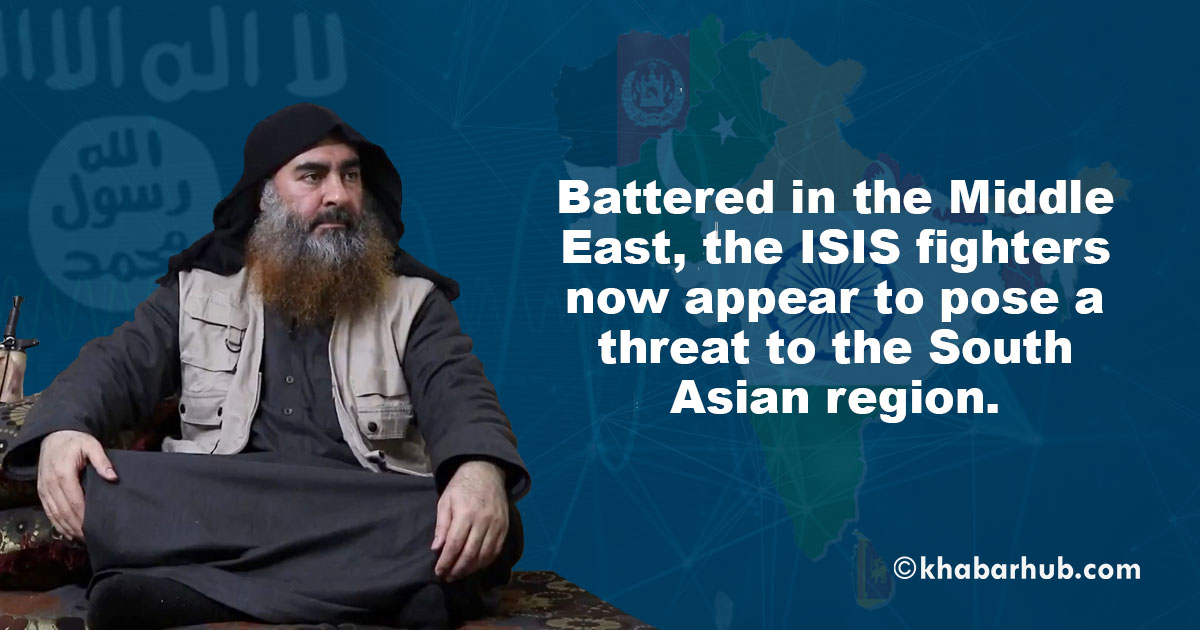Battered in the Middle East, the ISIS fighters now appear to pose a threat to the South Asian region. The recent series of deadly terror attacks in Sri Lanka killing more than 250 people, and Monday’s attack in Bangladesh injuring three people are amply clear that the group eyes South-east Asia as its next terrorism hotspot. The recent attacks in Sri Lanka have been seen as one of the deadliest terror attacks in the history of South Asia, and observers say this should be taken as a wake-up call for the entire region.
The most recent instances of such threats have been evidenced in Sri Lanka and Bangladesh. Even though the influence of the IS in South Asia was not substantial, the recent attacks in Sri Lanka and Bangladesh show that this region, too, has had all the shadow of IS trajectory.
That wasn’t enough. He went on to say that their battle today was a battle of attrition, and vowed to ‘prolong it for the enemy’.
It wouldn’t be imprecise to say that the ISIS is endeavoring to create a new arc of its activities in the region, including Indonesia, the Maldives, and Sri Lanka after being defeated in Iraq and Syria. This shows that this region, too, will not remain aloof from IS threat due to its porous borders, weak enforcement measures, weak system, poverty, people’s frustration, among other factors.
Consider what ISIS leader Abu Bakr al-Baghdadi on Monday said in an 18-minute long video message leaning on a cushion cross-legged and with an assault rifle at his side: ‘The battle of Baghouz is over and that there will be more to come’. The Syrian city of Baghouz was the last IS stronghold.
In fact, the US has already said that the spread of Islamic terrorism is a major concern for the United States and the entire world and that it would continue to fight against the remaining IS members.
That wasn’t enough. He went on to say that their battle today was a battle of attrition, and vowed to ‘prolong it for the enemy’. Baghdad’s video message is an evidence that they might carry out further terror attacks anytime, anywhere – could be South Asia, which is gripped by political instabilities and disappointments.
Such terror attacks will encourage or attain a higher level of support to the fringe local militant groups — seeking to establish a caliphate – active in the region.
Several factors such as the growing disenchantment among the people, unemployment, and tensions between communities could prompt the group to expand its organization in this region, including Afghanistan.
In fact, the US has already said that the spread of Islamic terrorism is a major concern for the United States and the entire world and that it would continue to fight against the remaining IS members.
The IS influence has spread across South Asia, particularly after 2014, when some pro-IS social media platforms widely circulated the ‘ISIS Khorasan’ maps showing the region as part of the caliphate’s ambitions of conquest.
Observers say the South Asian region can be a fertile ground for radicalization since it has already witnessed IS-style terror attacks in recent years. Meanwhile, counterterrorism analysts in Nepal point out that the countries in the region need to work together to eliminate the common enemy.
For instance, Hemanta Malla, former DIG of Nepal Police, possibilities of attacks cannot be ruled out in some religious sites of Nepal and India. Nepal, India and Western powers, especially the US, should collaborate to avert any untoward incidences, he said while suggesting that Nepal should basically prioritize on vigilance since the group can use Nepal’s soil for terror attacks in India.
Consider what Purna Silwal, Brigadier General (Retd.) of Nepal Army had to say: “Nepal’s security mechanism has to be observant at all times, and track all suspicious activities.” The country’s intelligence agencies, Silwal suggested, have to be perfectly equipped and motivated since there could be infiltrations on various pretexts.
If media reports are to be considered, the IS leaders, too, have started to move money out of Iraq and Syria through secret financial transfers and business investments. However, it is not clear whether the money has been transferred to the South Asian region.
Meanwhile, in his most recent video ISIS leader Baghdadi, who has a $35 million bounty on his head, said the attacks in Sri Lanka was carried out as a revenge for the fall of Baghouz, a town in Syria.
However, US government analysts have said they will review the video of Baghdadi to ‘confirm its authenticity’.
Whatever the result about the authenticity of the video be, the US has said IS has already suffered a crushing strategic and psychological blow following their defeats in Iraq and Syria.









Comment